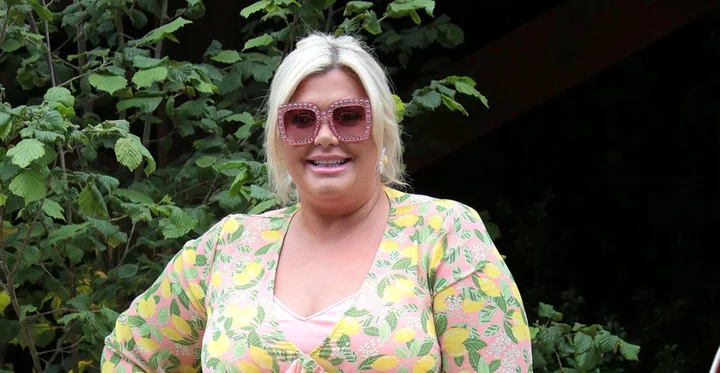
Gemma Collins says she wouldn’t ‘need to’ consider surrogacy: ‘I can have the best doctors going’
Gemma Collins has opened up about her future plans for motherhood, amid her battle with polycystic ovary syndrome (PCOS) and an underactive thyroid. The former The Only Way is Essex star dismissed the suggestion that she could use a surrogate to have children, declaring that she has “the best doctors going” to help her get pregnant when she is ready. Speaking to OK! Magazine at the Chelsea Flower Show recently, Collins, 42, admitted that she did not know if she sees herself ever having children in the future, despite having previously said she was “desperate” to have a baby with fiancé Rami Hawash. “Obviously I’ve got PCOS and all of that,” she said. “I could have a child at 50. If I’d had kids sooner, I would probably have been crazy, whereas now, I’m Miss Organic, I can just be at Zen with the child.” However, Collins said that going to mother and toddler groups has “never interested” her, unless they are in “Knightsbridge, darling”. “I’m happy to host my own one indoors or around the vegetable patch,” she continued. “A bit of organic pressed champagne! “It’s a lot having a kid. It’s a big commitment but it’s also very rewarding. But my life will take me where it’d going to take me. It’s taken me this far and as sure as hell, it’s not over yet.” Asked if she would consider having a child via surrogate, the TV personality said: “I don’t think I’ll need too. I’m The GC, honey. I can have the best doctors going. I’ll just ring one up and say, ‘Right, come on, get me pregnant!” Collins also gave an update on her mental health and said she was off all anti-depression medication as it “really clouded” her judgement. In her 2021 documentary Gemma Collins: Self-Harm & Me, Collins revealed that she was “always put off having children” due to the fear that her depression and self-harming would make her an “unfit mother”. However, instead of taking medication to treat the condition, she now uses a device called the Flow Neuroscience Headset. The device, created by a Swedish company, uses electric pulses to increase brain activity and is currently being trialled by the NHS. Collins said: “I do it in the morning when I’m making a cup of tea. It’s a head device programmed to an app on your phone and it stimulates the frontal area of the brain linked to depression.” The I’m A Celebrity star claimed the headset has so far helped to clear her head and bring her emotions back, which she said were “numbed” by anti-depressants. “I’ve got all my feelings again and I felt that my judgement was quite clouded. I didn’t feel like I could see dodgy people around me. People were taking me for granted but my brain is so sharp now and I’ve got no side effects,” she said. “I was desperate to get off medication – but everyone is different and they need to consult their GP. But I was like, ‘I don’t want them in my life.’ That’s it.” Read More Dani Dyer chooses matching initial names for newborn twin daughters: ‘My heart feels so full’ Succession’s Sarah Snook welcomes her first child with husband Dave Lawson Queer parents need everyone’s support, not people calling us ‘breeders’ Gemma Collins urges women to talk openly about incontinence Sarah Beeny shares health update after all-clear from breast cancer Crackdown on vape adverts targeting kids – what parents can do
2023-05-30 19:27
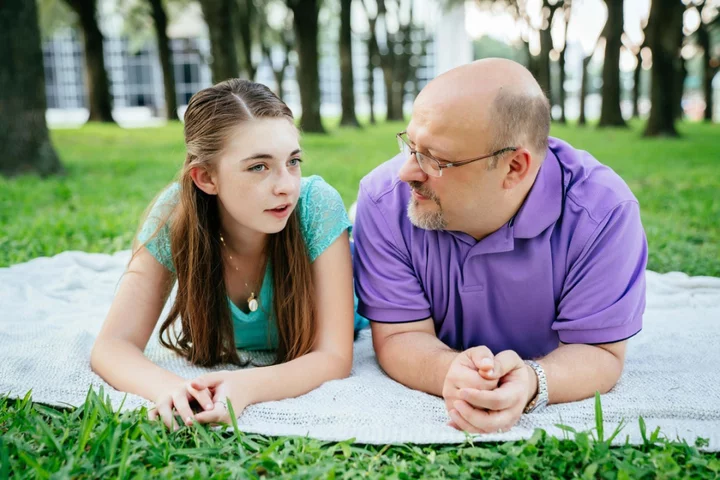
Crackdown on vape adverts targeting kids – what parents can do
The Government is cracking down on vape marketing targeted towards children and young people, Rishi Sunak has said. The news comes days after the Prime Minister spoke about his concerns his own daughters would potentially be targeted by vape marketing on ITV’s Good Morning Britain. Ministers have now pledged to close a loophole allowing retailers to give free samples of vapes to children in England, amid concerns over the proportion of children trying e-cigarettes. There will also be a review into banning retailers selling “nicotine-free” vapes to under-18s, and the Government will look at the rules on issuing fines to shops that illegally sell vapes to children. The Prime Minister said he was “deeply concerned” about an increase in children vaping and was “shocked by reports of illicit vapes containing lead getting into the hands of schoolchildren”. Sunak said: “That is why I am taking further action today to clamp down on rogue firms who unlawfully target our children with these products. “The marketing and the illegal sales of vapes to children is completely unacceptable and I will do everything in my power to end this practice for good.” Why is vaping bad for children’s health? “We could argue vaping doesn’t have the amount of toxins cigarettes have – up to 70 of these cause cancer – but vaping is not completely harmless,” says GP Dr Anita Raja. “It’s very important to protect your organs, especially your lungs and brain. Vaping can be particularly detrimental to people under the age of 18 who are still developing.” Most vapes contain nicotine, which is highly addictive and can cause can cause an increase in blood pressure, heart rate, flow of blood to the heart and a narrowing of the arteries. “It can become very difficult to get off the nicotine – so why would you want to be addicted at such a young age?” Raja asks. The other problem with vaping is that experts don’t yet fully understand the long-term risks because it’s such a new phenomenon, she adds. “Let’s not forget when cigarettes were introduced many decades ago we didn’t know that they could cause cancers and long-term irreversible lung damage.” How to talk to your children “First up, learn about the facts of vaping yourself. Get information from a reliable source,” says parenting expert Liat Hughes Joshi, author of Help Your Child Cope With Change. “So that when you do end up discussing this with your teenager you’re coming at it from a place of knowledge and you’ll feel more confident.” The conversation could be tricky, so approach it calmly. She advises: “Choose your time in place carefully. Don’t pounce on your teenager when they’re in the middle of something or when they are stressed about an exam. Choose a time where you’re both feeling relatively relaxed.” “Instead of telling them not to, what you are much better doing is giving them that information about the real risks and the downsides of vaping, so that they can hopefully make a decision of their own which is the right decision,” Hughes Joshi says. “It’s definitely worth talking to them about ideas around [peer pressure] and giving them the confidence to push back and say, ‘I don’t have to copy all my peers if they are vaping’.” Similarly, if you know or suspect that your child has already vaped, try not to fly off the handle. “Don’t automatically scold them,” says private GP Dr Suhail Hussain. “Find out why they tried it, and then listen. Be understanding and informative, not angry and disappointed that they would do this in the first place.” What about if you vape yourself but don’t want your child to follow suit? “We need to lead by example,” says Raja, who believes vaping should be used only as a way for adults to quit smoking. “It is almost impossible to convince your children to not vape if they see you doing it. If you don’t want your child to vape, then you shouldn’t vape, or certainly not vape in front of them.” Read More Charity boss speaks out over ‘traumatic’ encounter with royal aide Ukraine war’s heaviest fight rages in east - follow live How to make a small garden feel bigger How not to get ripped off when upgrading your kitchen The best scented plants to enhance your balmy summer evenings
2023-05-30 17:21
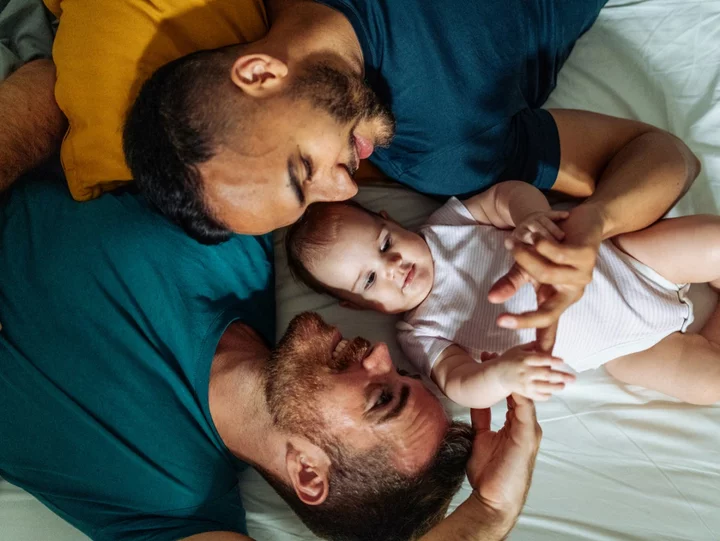
Queer parents need everyone’s support, not people calling us ‘breeders’
A recent book called The Queer Parent, written by Lotte Jeffs and Stu Oakley, calmly opens with the line: “Ninety per cent of queer parenting is simply… parenting”. It’s a fair point. Whether you’re male, female or non-binary, single or partnered, and regardless of your sexuality, all of us who parent aim to meet the exact same needs for our children, day in, day out. The title caught my attention because I think there’s something very timely and profound about the act of being a gay or queer parent today. It’s doing the work that many (dare I say most) people want to see in society – namely raising a new generation of non-toxic humans, making the world a happier place to be different – but in the slow grind of parenthood, not just in the quick flash of activism. I really believe gay and queer parents are changing the world, in a very deep yet unsexy way. Mum and mummy being at the school gate, dad and daddy collecting a child from nursery, or as we’ll get into, dad giving birth to a baby son or daughter. They’re changing the world by being active, visible and engaged parents. But there’s a slightly awkward, under-discussed aspect to this that has truly got under my skin in the eight years since I’ve been a parent. I’m pansexual, so I fancy men as well as women, non-binary people and pans. But oddly I’ve always been frightened to talk about parenthood with most of my avowedly gay male friends – because I’m never quite sure if anyone’s going to derogatorily refer to me as a “breeder” or not. It’s hard to know how well-known the term “breeder” is. I personally used to hear it a lot more back in the mid-Noughties when I was in my early twenties. It’s essentially a slightly bitchy term that’s interchangeably derogatory to people with kids and/or straight people as a whole. As a word, it’s a pretty effective zinger. Straight people have tended to use sexual imagery to define and denigrate gay people. It seems fair that gay people would do the same to heterosexuals. “Breeder” reduces the pleasures of sex to a slightly dehumanised process. In fact, unconnected to sexuality, Gulliver’s Travels author Jonathan Swift used the term to reduce people to a brutal, almost farmyard functionality in a satirical essay from 1729. It’s important to establish that I’m not here to spank gay men on the bum. Neither am I here to accuse them of “heterophobia” either – which I’ve put in quote marks because I’m dubious that it can even exist as a concept. If I was an exclusively gay guy, I might robustly define my sexuality against heteronormativity in ways which could be punchy and sharp. I might also – by virtue of a lifetime of homophobia and trauma that may have started in the home as a child – have latently negative views about the whole concept of family. But I am who I am now, and despite understanding all this, I’m still getting weary of it as a trope, and also as a reason not to talk about the many genuine ecstasies of parenthood. I like being a dad and I like dating guys. These things shouldn’t be so controversial – yet weirdly, I find it’s gay men who have more slack-jawed incomprehension of these two facts than any other group in society. My own personal beef is very trifling in the scheme of things, however. The much bigger picture is that – newsflash – gay, queer and trans people have kids. Loads of them. While data is limited, there was a 40 per cent rise in same-sex parents from 2015 to 2019. Anecdotally, it seems to be a much greater phenomenon than is reported. The same goes for the rarely examined hardships LGBT+ people typically go through to even have kids: namely the incredible anguish of IVF and the epic emotional journey of surrogacy. You’d expect increased visibility of gay and queer parents would have phased out the use of the word “breeder” as a pejorative, but weirdly it lives on – especially on TikTok where, perhaps like an unkillable echo of my own twenties, it’s mostly young people using the word as a way of defining their queerness and riling up straights. What makes my heart sink, beyond knowing that a younger generation is using the same dumb-ass words people said 20 years ago, is that this is a really, really bad time to start being unsupportive of gay parents. While queer visibility may feel greater than ever, the world is going backwards in many respects. Even just in the realm of children’s culture, things as harmless as a drag artist reading stories can draw an angry mob of culture warriors – as happened at Tate Britain in London in February. Look at Florida – once the home of fictional queer icons The Golden Girls, now home to Republican governor and presidential hopeful Ron DeSantis – and you’ll see books with titles as benign as This Book Is Gay banned as a result of his vociferously “anti-woke” legislation. We all know that creating this type of hostile environment will surely result in more bullying, more hatred, more lives blighted. While queer visibility may feel greater than ever, the world is going backwards in many respects It’s pathetic, cruel yet grimly successful at the same time. With every small news story or stunt, a palpable hostility festers. Thus anything that drives a wedge between gay/queer people and parenthood is a bad look right now – especially with elections looming in the US and Britain that I fear will see the issue of gender identity playing a huge, calculatedly divisive role. What better way to rebuff this negativity than by strongly standing up for gay and queer parents. Specifically, we could start standing up for men having babies. Trans men like the British journalist Freddy McConnell who a few years back gave birth to a child who seems to be doing great (and likes a good splash in the sea), or Iowa-born Tanius Posey, who thankfully was able to breastfeed his child despite simultaneously getting online abuse for it. Logan Brown, also from the UK, is a trans man who has been documenting his pregnancy over the past few months with genuine clarity and candour. He gave birth to his daughter Nova just over a week ago. Celebrated gay NYC artist Keith Haring frequently placed a baby into his work, a shining symbol of hope and playful optimism for the future. Maybe in the same spirit as Haring, we could all do with a new beginning in our attitudes to gay and queer parenting, inspired by a rather miraculous baby such as Nova. Read More How OCD can destroy relationships: ‘I had the obsessive fear that I might cheat’ Women with body hair remain a cultural taboo, and I can’t see it changing Flip-flops, nudity and ‘up the vajayjay!’: How the red carpet became a platform for protest
2023-05-30 14:27
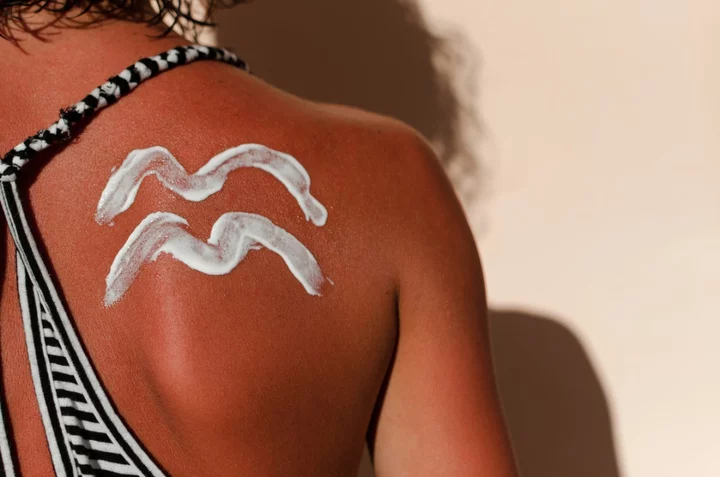
The truth about applying after-sun on sunburnt skin, according to the experts
After the UK recorded its hottest day of the year on Sunday, with some parts of southern England reaching 31C, many could be waking up with sore, sunburnt skin today. Taking care of your skin after excessive sun exposure is incredibly important, as failing to do so could lead to long-lasting damage. However, if your first course of action after sustaining a sunburn is to immediately buy and apply after-sun, then you may not be doing an adequate job. According to the experts, applying after-sun could do your skin even further harm if you don’t take a thorough look at the ingredients. That’s why it may be a wise idea to opt for an aloe vera gel instead. “After-sun formulas tend to have rich, thick consistencies containing oils, which create an emollient barrier on top of the skin trapping in the heat in the upper layer of the epidermis and exacerbating the inflammation and ‘burn’ feeling on your face,” Michaella Bolder, Time Bomb skincare expert tells to The Independent. “Plus, many over the counter after-suns will contain chemicals and/or fragrance. This will just irritate the damaged skin!” Aloe vera has been highly regarded for a very long time due to its remedial properties, Lorraine Shrivener, director of Eden Skin Clinics, explains. “Aloe vera has been a trusted skin saviour for many years,” she says. “With its immediate cooling effect to the skin, it’s a firm favourite for post-suncare.” According to Ms Shrivener, aloe vera is most potent when attained as a pure, clear gel. While gels allow heat to escape from the skin, thicker creams that have been designed to lock in moisture could trap heat within the skin, making it feel cooler rather than hotter. However, as medical director of CosmedicsUK and GP Dr Ross Perry points out, the medicinal properties of aloe vera have not technically been affirmed by scientific research. “Aloe vera is a traditional herbal remedy believed to reduce sunburn symptoms,” he explains. “There is no scientific evidence in support of its use for sunburn, but anecdotal evidence is that it is soothing and safe and can feel cooling.” Aloe vera is a plant species that can trace its origins to the Arabian Peninsula. Mentions of aloe vera as a curative ingredient can be found in the Ebers Papyrus, from 16th Century BC, and in Pliny the Elder’s Natural History, which was written in the mid-first century AD. Despite the supposed lack of scientific evidence to back its use as a treatment for sunburn, many health professionals still recommend it for soothing irritated skin. “Aloe vera is thought to have a myriad of positive effects on skin, especially sunburnt skin,” says Dr Natalie Spierings, consultant dermatologist at Dermatica. “True clinical effectiveness has yet to be established. But aloe vera is not harmful and it might aid in helping calm down sunburnt skin, so it is worth giving it a try.” While some skincare experts would advise opting for a clear aloe vera gel instead of a heavier, moisturising after-sun when treating sunburn, others would suggest simply finding an after-sun that contains the plant. “After burning the skin you should think cool and repair,” says Ms Bolder. “The best way to do this is to apply a formula with a high water and high aloe vera content - the more natural and gentle the better! “Aloe vera has quite impressive cooling, healing and antiseptic properties so will beat a generic after-sun every time.” Using an after-sun can still be beneficial if you make sure that the ingredients are gentle and natural as possible. However, if you’re not entirely sure of whether a specific after-sun will do more harm than good, then going for a clear aloe vera gel would likely be your safest option. With around 16, 200 new cases of melanoma skin cancer reported in the UK every year, according to Cancer Research UK, looking after your skin is of the utmost importance during the hotter months. Dr Vikram Rajkomar, a consultant dermatologist at Pall Mall Medical who specialises in the treatment of skin diseases and skin cancer, recommends speaking to a consultant dermatologist as soon as possible if pain caused by sunburn persists. Read More The truth about applying after-sun on sunburnt skin, according to the experts Mum’s warning after viral TikTok hack left skin peeling from her face TikTok Influencer hospitalised for after horse falls on her at Arizona ranch Teenagers are increasing their chances of cancer with 'sunburn art' Europe heatwave: Tourists warned as temperatures set to soar
2023-05-29 21:16
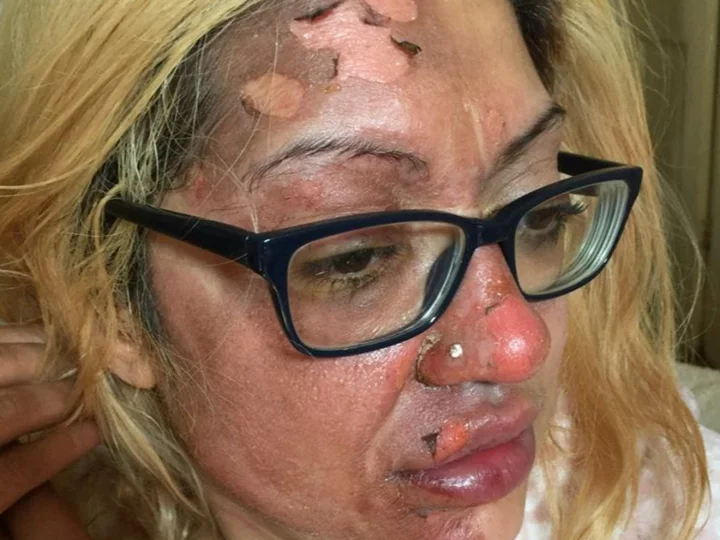
Mother’s warning after viral TikTok hack left skin peeling from her face
A terrified mother has warned against cooking eggs in a microwave after the viral TikTok ‘hack’ exploded and left her skin pealing from her face. Shafia Bashir, 37, said she’d been in “absolute agony” after making a poached egg using a much-publicised recipe available on the internet. She’d first poured some boiling water in a mug before adding the egg and then put it in the microwave for a couple of minutes until it had cooked. But when she put a cold spoon on the egg, it erupted “like a fountain” and scolded the right side of her face - leaving her in the “most excruciating” pain of her life. Shafia went to A&E where her burns were treated, but she said they were still stinging 12 hours after the incident. And though her wounds have now healed, the mum-of-one has still cautioned others to think twice about attempting the popular dish. She said: “I just don’t want anyone else going through that, because it is trending on TikTok…It was the most excruciating pain in my life. “It was a terrifying time for me. I was in absolute agony. “As soon as I put the cold spoon in, it exploded like a fountain and it scolded me. “I put my face under the tap and then had to get my mate to look after my daughter so I could go to A&E. “My face has healed now, luckily with no scars. I used Vaseline, Sudocrem, whatever I could get my hands on.” Shafia, from Bolton, Grtr Manchester, said she had been making the dish for three years when she’d decided to cook it on May 12 while feeling “starving” She had followed a recipe that her ex-mum-in-law had taught her, but on this occasion, she was left stunned when the cooking trick ended in disaster. She said: “I did it exactly the same as I usually do it. I had already made the toast, I was starving! “My ex-mother-in-law told me about it. She told me how to make a poached egg in the microwave. I had been doing it for three years. “I boiled the kettle, half-filled the mug with water, put salt inside, the egg inside, and microwaved it for a minute. It wasn’t cooked, so I put it in for another minute.” “After it happened, I put my face under the tap for 20 mins. But the burning lasted for 12 hours. It just didn’t stop.” The British Medical Journal previously said that microwave ovens should display clear warnings about exploding eggs. Cooking shelled eggs in a microwave is dangerous because the casing holds in heat. Once you have removed the egg from the microwave, it will carry on cooking itself and any disruption can cause an explosion. But similar dangers can apply when cooking sunny side up or poached eggs in the microwave. These cooking hacks proved popular on social media sites such as TikTok, as people look for ways to save time with everyday tasks. But it’s not the first time the trick has gone wrong, with Chantelle Conway, from Farnworth, claiming a similar thing happened to her in 2021. Shafia said she had been left traumatised after the incident and vowed never to eat an egg again. But she has also seen the funny side of her experiences and made light of them to her 15,000 followers on TikTok. Shafia said: “For my last videos on TikTok, I did Beauty and the Beast and Tony Montana from Scarface, with the burn. “My followers thought it was a filter!” Read More Woman sparks debate by documenting busy last day at work after being fired: ‘Just leave’ Selena Gomez ‘yells’ at security guard at Beyoncé’s Renaissance tour Mother hit with deluge of abuse for taking toddler’s packed lunch to a restaurant Schoolboy almost dies from swallowing magnets for TikTok challenge Woman shares honest review of New York City apartment TikTok mom slammed after making 5-year-old son run in 104 degree heat
2023-05-29 20:46

Bruce Willis’s wife Emma credits nine-year-old daughter with important health tip
Bruce Willis‘ wife Emma Heming Willis has shared an emotional story about how their nine-year-old daughter, Evelyn, has tried to help her father as he suffers from dementia. Heming Willis, 44, shared a series of videos to Instagram on Monday (22 May), with the story about how the youngest child of the Die Hard actor, 68, was researching information about her father’s disease. Willis’ family shared an update in Febuary announcing the actor’s aphasia condition – when a person has difficulty with their speech and language – had developed into frontotemporal dementia. “So, I have to tell you this story, and I’m gonna try to do it without crying, ‘cause when Evelyn told it, I was an absolute puddle,” Emma told her Instagram followers on Monday. Evelyn told her mother that people living with dementia can suffer from severe dehydration. Hemming Willis asked her how she learned that, and said Evelyn told her that she was looking up “fun facts about dementia” during some free time at school. “Now that’s not funny, but it’s kind of funny, and she really is her father’s child, because these two love some random facts,” Emma said. Hemming Willis expressed that she was proud of her daughter for her empathy for her father’s condition and her curiosity to learn about it. “I said to her, ‘Evelyn, we will always make sure daddy has a bottle of water in hand.’” According to Alzheimer’s Society, a person with dementia may become dehydrated if they’re unable to communicate or recognise that they’re thirsty, or if they forget to drink. This can lead to headaches, increased confusion, urinary tract infections and constipation, making the symptoms of dementia worse. Hemming Willis said she told her daughter: “That is the most loving and compassionate thing that you can do is to be curious and educate yourself on your dad’s disease.” She added that it is important for caregivers, friends and family to educate themselves on the disease of their loved ones so they can “support them in the best way possible”. Hemming Willis concluded the video by saying: “So keep educating yourself, stay curious and remember to hydrate your loved ones.” The Make Time Wellness founder has continued to raise awareness about dementia since her husband’s diagnosis earlier this year. She often invites dementia practitioners and health experts to join her for discussion on Instagram Live to raise awareness of the disease. She is also mother to daughter Mabel Ray, 11, whom she shares with the Pulp Fiction star. The pair have been married for 14 years. Willis has three older children from his previous marriage to Demi Moore; Rumer, 34, Scout, 31 and Tallulah, 29. Read More Woman defends picking up ‘$8k’ sofa from New York street Couple with 37-year age gap who met when he was 15 have hopes dashed Elle Fanning wows fans with daring cut-out dress at Cannes: ‘My nips could never’ Bruce Willis’s wife Emma credits nine-year-old daughter with important health advice Bruce Willis’s wife shares update after actor’s dementia diagnosis ‘Suddenly, I saw Dad again’: The radical tech helping those living with dementia
2023-05-29 00:54
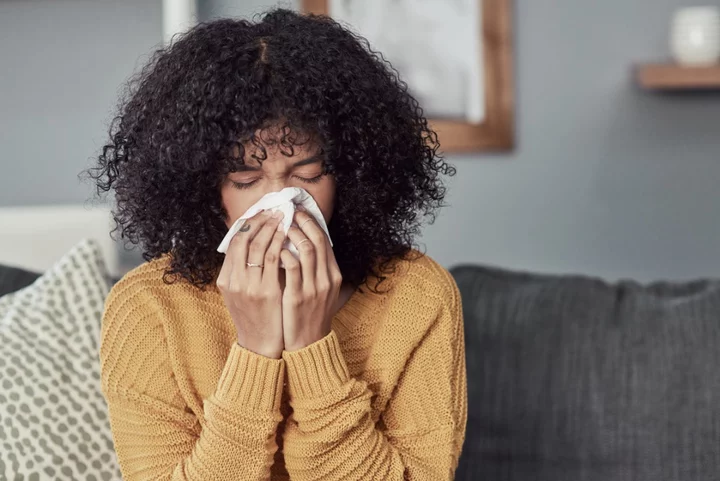
Pharmacist warns against one common hay fever habit that could lead to more serious eye problems
A pharmacist has said that frequently rubbing your eyes can lead to more serious eye issues. Symptoms of hay fever, which is an allergic reaction to pollen, include sneezing, coughing, rashes, blocked noses, headaches, and itchy red eyes meaning it is natural to want to touch and rub your eyes in moments of discomfort. But community pharmacist Sultan Dajani, from eyecare brand Golden Eye, told The Mirror how allergies can cause more serious eye problems. Dajani said: "When we encounter an allergen, either from inhaling, swallowing, or simply by the skin coming into contact with it, the body goes into fighting mode and the immune system overreacts to the substance. "A protein known as IgE is produced to go after the allergen, and a chemical called histamine is released into the blood – and it is this that creates the symptoms commonly experienced. "So, in fact when we have these types of symptoms the body is functioning and doing its job to get rid of the allergen. "Though we need our body to react in this way, the symptoms themselves can really affect our general wellbeing, lowering our immune system and interrupting everyday activities." Dajani explained that frequently touching our eyes can open up the possibility for further eye problems or infections such as styes, conjunctivitis, or blepharitis. "Our hands come into contact with most things, from people to surfaces, making it easy to transfer bacteria and germs to our faces – and if we are reaching for our eyes, it’s easy for a simple rubbing of the eyes to develop into something else." Issues that could arise from this include a stye, which is a swollen lump on the eyelid or near the eyelashes. Dajani explained: "People tend to get more styes during allergy season. Allergies are known risk factors for styes. With the experience of itchy eye symptoms it can feel impossible not to rub them. One problem that could also be related to rubbing eyes is conjunctivitis, which is an infection of the eye often caused by a virus or bacteria. Blepharitis, when oil glands near the base of the eyelashes become clogged, leading to irritation and redness of the eyes, can also be triggered by continuous touching or rubbing of the eyes, Dajani said. Read More Why do we get hay fever and what are the symptoms? Should I keep my windows closed or open in hot weather? What is Stiff Person Syndrome? Signs and symptoms of Celine Dion’s incurable condition The symptoms of hay fever in adults explained 7 tips and tricks for hay fever relief Bear Grylls urges parents to let their children ‘set own rules’ on social media usage
2023-05-28 00:22

Bear Grylls urges parents to let their children ‘set own rules’ on social media usage
Celebrity adventurer and chief scout Bear Grylls has said that children need to learn to “police” themselves and manage their own time on social media. Speaking on stage at the annual literature event Hay Festival in Wales, Grylls said that children should learn to self-regulate how much they use the internet, and how they use it. His comments were made after a child in the audience asked for his thoughts on the power of social media. “Social media can be brilliant, it really can,” he said, via The Times. “The brilliant side of it is that it connects us, and you can learn stuff so fast and you can have fun and it’s brilliant entertainment.” He continued: “The key, though, is not letting it control you. You control it. So you be in charge.” The celebrity adventurer warned the audience against permitting social media to “erode you”. He said: “If I’m on it all day, that’s going to erode your heart a bit.” Grylls added that he and his wife, Shara Grylls, did not set rules how long their three sons – Jesse, 19, Marmaduke, 17, and Huckleberry, 14 – are allowed to spend on social media. “I say ‘Set your rules’,” he said, adding: “You’re in charge because after you leave school nobody’s going to be policing it for you.” “You’ll have to police your own life. That might be eating healthy, or going to the gym, or if somebody treats you badly in a relationship then having some boundaries and saying: ‘No – I’m not going to let you’. You’ve got to police yourself with social media as well.” The Man Vs Wild star added that he is concerned that children are sometimes “lost” in the world of their smartphones, and encouraged parents to teach their children “practical skills” because they may not be equipped later in life. “I meet many big, strapping men who will say to me: ‘I really want to learn how to tie this simple knot – I feel a bit inadequate that I can’t tie the roof rack on properly,’” he explained. Read More Mother hit with deluge of abuse for taking toddler’s packed lunch to a restaurant Nick Cave says he was ‘extremely bored’ at King Charles’s coronation Ivy walls, gilded sofas and one very diva plaque: Inside Tina Turner’s ‘cartoon palace’ in Switzerland
2023-05-27 20:48
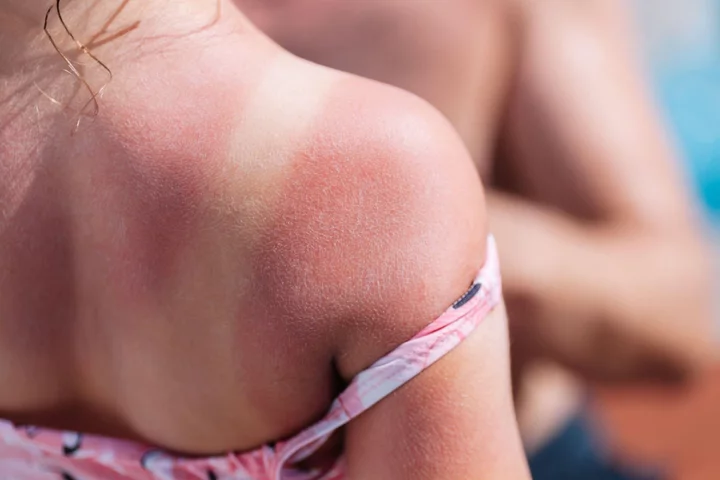
Bank holiday heatwaves predicted: 6 sunburn myths that could put you at risk
After a largely disappointing spring, the bank holiday weekend is set to bring with it the warmest weather of the year so far. Temperatures are predicted to go as high as 24C on Saturday and Sunday, according to the Met Office, with dry and sunny weather expected to last into next week. Many of us will be heading out to enjoy the sunshine – but as ever, it’s important to protect your skin from harmful UV rays. When it comes to tanning and sunburn, there are a variety of misconceptions that still abound, and the consequences of not following sun protection advice can be severe – especially as skin cancer rates across the UK have been rising, charities have warned. Here are five sunburn myths that could be putting your health at risk… 1. The UK and Irish sun isn’t strong enough for sunburn We might grumble about the gloomy weather in our part of the world, but the risk of sunburn remains for a large part of the year. “The sun can be strong enough in the UK between mid-March and mid-October to burn you,” says Karis Betts, senior health information manager at Cancer Research UK, which is working in partnership with Nivea Sun to educate consumers on how to be sun safe. “You’re most likely to get burnt in the middle of the day, when the sun is at its highest point, not necessarily its hottest.” UV rays are generally strongest between 11am and 3pm, she says: “It’s wise to take a break in the shade or indoors during these hours. And remember, you can burn through clouds.” 2. You have to go red before you go brown Our complexion can turn darker in the sun due to the release of melanin as the skin attempts to protect itself, but that doesn’t mean you need to turn lobster-red first in order to try and get a tan. “This is one of the biggest myths in sun protection, and it contributes to skin damage and skin cancer cases,” says Abi Cleeve, MD of Ultrasun UK. “The fact is that as soon as the skin reddens, it’s in trauma. A ‘trauma tan’ occurs from inadequate protection where the skin appears to tan more quickly, but hasn’t – it has burned. This only ensures that the skin peels, leaving the skin tan-less in days.” To avoid this pattern, Cleeve recommends gradually building up your time in the sun, and using higher SPF sunblock: “Use high UVA and UVB filter SPF – a minimum of SPF30 with a UVA filter over 90% will protect the skin and still tan, just more slowly [and] minimising long-term damage and peeling.” 3. The odd sunburn doesn’t make a difference It’s easy to get caught out by a sudden blast of sunshine, but don’t be fooled into thinking that one instance of sunburn here and there doesn’t matter. “This is something I hear a lot but unfortunately, it’s just not true,” says Betts. “Damage to our skin from the sun is the number one cause of melanoma, the most serious type of skin cancer, and skin damage from the sun builds up over time – it doesn’t go away after the burn fades.” That’s why wearing sunblock is crucial – even more so for children. According to the Skin Cancer Foundation: “Even one blistering sunburn in childhood or adolescence more than doubles your chances of developing melanoma later in life”. 4. People with darker skin don’t get sunburnt “Anyone can get sunburnt – including people with darker skin – but your risk of getting sunburnt and how sunburn feels will depend on your skin type,” says Beth Vincent, health information manager at Cancer Research UK. “For people with lighter skin tones, sunburned skin is usually red, sore, and swollen. In people with darker skin tones, sunburned skin might not change colour but will often feel irritated, itchy, tender and sore.” While people with lighter skin tones are generally at higher risk of sunburn and skin cancer, you should still use sunblock if you’ve got darker skin or a tan. In terms of sunscreen for darker skin tones, Betts recommends: “At least SPF15 and four or five stars [for UVA protection]. Make sure to reapply it regularly and generously, especially after swimming, sweating or towelling.” 5. All body parts are created equal when it comes to sunscreen “Burning – overexposure to UVB rays – tends to happen where the skin is closer to the bone structure, and especially where the part of the body faces directly the sun’s rays,” says Cleeve. “Tops of feet, shoulders, décolleté, top of the scalp and the nose – take extra care in these areas.” Other easy-to-miss areas include the scalp or parting, ears, areas around swimwear such as straps, and shorts that might move or rise up through the day. Cleeves top tip for all-over protection? “Do your sun cream naked! Then any movement in straps, shorts won’t suddenly bare unprotected skin to the sun’s rays.” 6. Aftersun products repair the damage done by sunburn “No, they don’t,” says Vincent. “While aftersun products may soothe the unpleasant symptoms of sunburn, they won’t fix any damage that was done to the DNA inside your cells.” If you do start to notice signs of burning, cover up or get out of the sun as soon as possible, she warns: “Don’t spend more time in the sun that day – even with sunscreen. And don’t rely on aftersun to fix the damage, because it can’t.” Read More Charity boss speaks out over ‘traumatic’ encounter with royal aide Ukraine war’s heaviest fight rages in east - follow live Dame Esther Rantzen faces stage four lung cancer: key facts about the disease Camilla receives ‘beautiful’ compliment after meeting children at historic library 7 foods that could help you get better sleep
2023-05-26 19:57
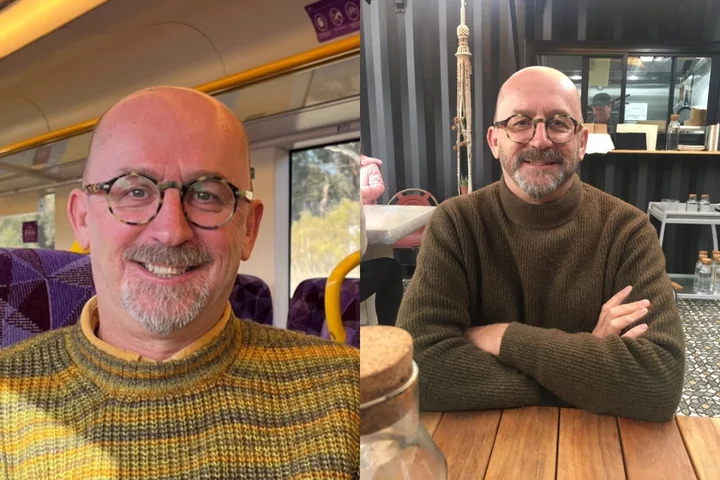
Australian man’s DNA test reveals he’s related to Kate Middleton: ‘We both have smashing smiles!’
An Australian man, who discovered he is a distant relative of the Princess of Wales through an AncestryDNA test, has said they both have the same “smashing smiles” and “great dress sense”. David Willis, 54, a union organiser, who lives in Avenel in Victoria, Australia, with his partner of 18 years, Rodney Kendall, 52, found out, in 2017 after doing the DNA test, that he is Kate’s fourth cousin once removed through his mother’s working class family from Durham in the UK. David, whose friends now call him a “queen”, has also tracked down a fourth cousin in Durham who he speaks to regularly via email – he hopes to one day meet her in person, and joked he might “extend (his) invitation to Kate”. But, despite the genetic evidence, David’s mum “still won’t believe him”, as she “always understood (their) roots to be working class”, but his cousins “are loving” the royal connection. On David’s father’s side, he has discovered that “they were a boat full of convicts”, so he now likes to jokingly refer to himself as “Kate’s convict cousin”. “I thought, what do Kate Middleton and I have in common? We both have smashing smiles, great dress sense and we’re distant cousins,” David said. “I have blue blood – my friends call me a queen – I truly am!” David began researching his family history more than 20 years ago, he explained: “I’m a bit of an amateur historian. “When Ancestry started – I’ve been involved for probably 18 to 19 years – I was able to access materials, resources and documents that in the past I would have had to have travelled to England to gain access to, so I was able to do that all online. “I researched my family on both sides, and that’s when it came up with an interesting connection.” In 2017, it appeared as if Kate was on David’s family tree, he said: “No one believed me – I had to double check the paperwork, and I thought what better way of doing it than testing my DNA through Ancestry. “I was able to just submit my DNA to finally prove and say to everybody that I got my research right.” It was confirmed that David’s mother’s working class family, from Durham in the UK, had links to Kate – they are fourth cousins once removed. David explained their connection: “We share a common ancestor, and we’re fourth cousins once removed. “We go back six generations and Kate goes back seven to our common ancestor, Jane Conyers, who was the daughter of a fellow called Sir Thomas Conyers, the ninth Baronet of Horden. “But, because he had three girls, the title died off with him and they married the local folk in the town. “So one of those girls was called Isabella, and her sister was called Jane. “About six generations ago, when my family sort of fell out of royalty with Sir Thomas, the rest of them were working in the coal mines – I find that fascinating stuff.” David has also discovered a third cousin, the daughter of his great-grandfather, who lives in Durham. He said: “We’ve actually been talking by email for probably one and a half years now, every couple of weeks. “She’s all excited about our family’s story. “And she did her DNA test too, and she’s definitely also related to Kate.” David explained how his family in Australia feel about being related to Kate: “My mother just doesn’t want to know – she doesn’t believe it because our family were always understood to be very working class. “Our family comes from Durham in the north, and my grandfather and his mother emigrated to Australia, after World War One, when my great-grandfather was killed. “He was a coal miner from Newcastle upon Tyne, so my family escaped poverty by moving to Australia, and we just always understood our roots to be working class. “So when there was a bit of a royal connection I don’t think we quite knew how to feel. “Mum still won’t believe me, but my cousins are loving it.” David explained how it feels to have a link to the current royal family: “I’m not a massive royalist by any means, because, in Australia, we’re a few steps removed. “But having said that, I still have a fascination with UK culture – I watched every bit of the coronation for example.” David explained the stark contrast between his mother’s and his father’s side of the family: “On my mum’s side we have sirs and Kate Middleton, but on my dad’s side, on the other side of the world, they were a boat full of convicts, so I joke that I’m Kate’s convict cousin!” Looking to the future, David hopes to meet some of his closer relatives in the UK, he explained: “I’d love to meet the cousin I’ve been emailing and have a trip to Durham. “Maybe I’ll also extend my invitation to Kate and see if she fancies joining!” Read More Kate Middleton sticks to royal protocol after fan asks for an autograph: ‘I can’t write my name’ ‘I did a DNA test and found out I had 7 siblings I didn’t know about’ Kate Middleton has touching response after child asks what it’s like to be a princess Charity boss speaks out over ‘traumatic’ encounter with royal aide Ukraine war’s heaviest fight rages in east - follow live
2023-05-26 18:57
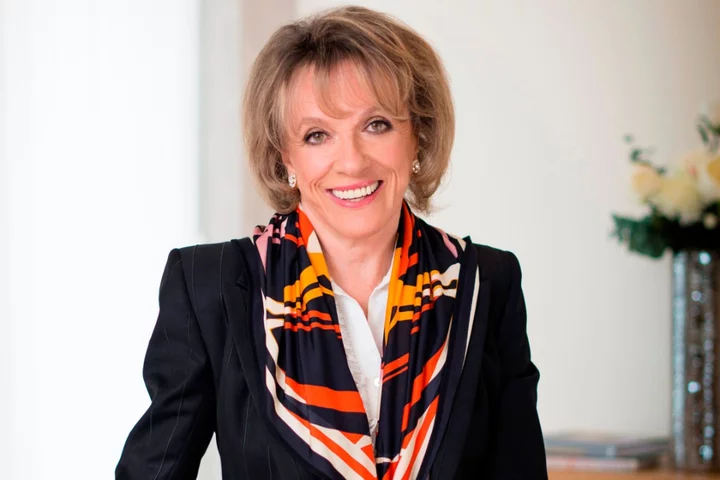
Dame Esther Rantzen faces stage four lung cancer: key facts about the disease
Dame Esther Rantzen has revealed that her lung cancer has progressed to stage four, after previously announcing in January that she had been diagnosed with the disease. The Childline founder and broadcaster told The Mirror that “nobody knows” if the new medication she is trying is working and a scan “will reveal one way or another”. Earlier in the year, Rantzen, 82, said she had “decided not to keep this secret any more because I find it difficult to skulk around various hospitals wearing an unconvincing disguise” and was “remaining optimistic”. Stage four is when cancer has spread from where it started to another body organ, according to Cancer Research UK, and is also called secondary or metastatic cancer. More than 43,000 people are diagnosed with lung cancer every year in the UK, according to the NHS, making it one of the most common forms of cancer – yet the disease is often shrouded in myths and misconceptions. So, what do you need to know? Here are some important facts about lung cancer… 1. Lung cancer can affect people of any age According to John Costello, a pulmonologist at the Mayo Clinic: “Lung cancer is certainly more common in older people – the average age of diagnosis is 70 years.” This does not mean it only ever affects older age groups, however. Lisa Jacques, lead specialist cancer nurse at Perci Health, says: “Most people develop lung cancer in their 60s and 70s, after many years of smoking, but occasionally people get lung cancer at a much younger age, even in their 20s and 30s.” 2. Lung cancer is not always caused by smoking Although smoking can certainly increase your chances of developing lung cancer, it is not the only cause. “Smoking is the cause of most lung cancers and the biggest risk factor, but about 10% of people who get lung cancer have never smoked,” explains Jacques. Costello adds: “There are some lung cancers which are genetic and may not be smoking-related, and some others are caused by exposures to substances like asbestos, radon gas and passive smoking” – although he says these are “relatively uncommon”. 3. Stopping smoking can help protect you Costello says: “Some of the damage and inflammation caused by smoking can be reversible, but in particular, emphysema is architectural destruction of the lung which causes extreme breathlessness and cannot be reversed.” So quitting smoking might reduce your risk and is always worthwhile for your health – but not starting the habit at all is much better. Speak to your GP if you would like support with quitting. 4. Lung cancer is not always deadly A diagnosis of lung cancer does not always mean certain death, but it is still serious. “Lung cancer has a 65% survival rate for five years in people with localised disease,” says Costello. “If it has spread around the body at the time of diagnosis, the survival rate is only 8%.” However, he says there are “new techniques in screening for lung cancer, such as CT scans in smokers over 50 years with a serious tobacco background”. These “may pick up very small early tumours, which can be removed with up to an 80-90% five-year survival rate”. So if you have concerns about a persistent cough, which is one of the key warning signs, see your GP and get it checked out as soon as possible. 5. Men are more likely to get it but women still need to be aware According to Cancer Research UK, men are more likely to get the disease than women (52% of lung cancer cases are men, compared to 48% of women). However, these margins are small, and women absolutely do need to be aware of lung cancer as well. “Lung cancer has been an increasing problem in women since they caught up with men in terms of smoking habit, and they are therefore at risk if they smoke, and some of the non-smoking related lung cancers are more common in women,” says Costello. Jacques adds: “It is the third most common cancer in the UK, and in women it is the second most common cancer type.” So, whether you smoke or not, look out for the symptoms of lung cancer – like a cough lasting longer than two or three weeks, recurring chest infections, breathlessness or aches and pains when breathing – and see your GP if you have any concerns. Read More Charity boss speaks out over ‘traumatic’ encounter with royal aide Ukraine war’s heaviest fight rages in east - follow live Camilla receives ‘beautiful’ compliment after meeting children at historic library 7 foods that could help you get better sleep Household energy bills set to fall from July: 7 ways to help keep bills as low as possible
2023-05-26 18:45
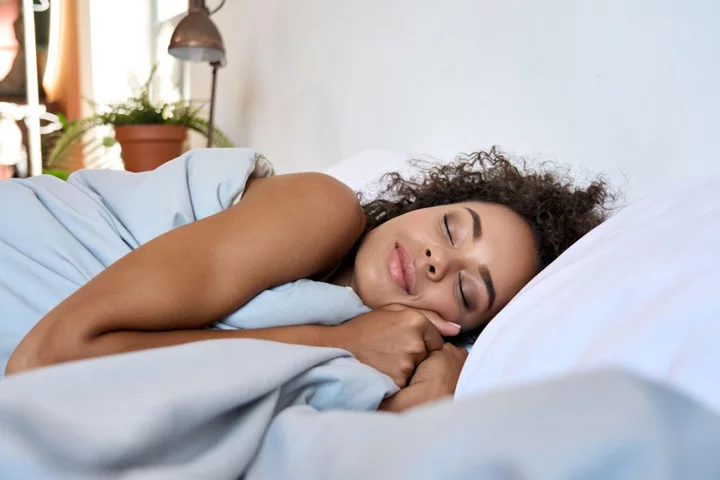
7 foods that could help you get better sleep
Wondering whether certain foods can affect your sleep patterns – or if eating certain things could actually help improve your sleep? The relationship between diet, sleep and overall health is two-sided, says Gabi Zaromskyte, registered nutritionist and founder of Honestly Nutrition. “Meaning what we eat and drink affects our sleep, but also, the quality and duration of sleep can affect our food choices,” Zaromskyte explains. “Scientific research has increasingly shed light on the significant impact of dietary choices on cognitive function, mood, and overall physical and mental health,” she adds. Certain dietary patterns and specific nutrients have been found to influence the sleep-wake cycle, sleep latency (the time it takes to fall asleep), and sleep architecture (the different stages of sleep), notes Zaromskyte. She continues: “And the quality and timing of our food and beverage intake can impact the production of sleep-regulating hormones, such as melatonin, which plays a critical role in regulating our sleep-wake cycle.” However, as Dr Maja Schaedel, co-founder of The Good Sleep Clinic points out, it’s important to understand that most research done so far shows that even though certain foods may be higher in melatonin, that does not necessary equate to falling asleep quicker. “You may have higher levels of melatonin, but if you’ve got stuck in a bad habit of tossing and turning for two hours before drifting off, or waking at 3am and not being able to return to sleep, foods high in melatonin are not going to solve your problem,” says Schaedel. She suggests that generally, it’s best to eat your evening meal at least two hours before bed, to avoid any indigestion, spikes in blood sugar and increase in body temperature that can occur while digesting. “If you tend to get peckish later in the evening, then plan a snack an hour or two before bed,” Schaedel adds. “It’s best to have something high in protein, like Greek yoghurt or nuts, and low in complex carbohydrates to avoid any spikes and falls in blood sugar.” Also, it might be wise to avoid the usual culprits which can trigger discomfort. “Fatty and spicy foods can cause heartburn and indigestion which can hinder good sleep, as well as alcohol, caffeine and tobacco,” says Lisa Artis, deputy CEO of The Sleep Charity. Here, experts share their go-to foods for supporting healthy sleep… 1. Cheese “Cheese gets a bad reputation as it’s commonly believed to give us nightmares, but actually it’s the opposite,” says Artis. “Cheese, and other dairy products, contain tryptophan, an amino acid which helps us to nod off more easily, and calcium which helps to reduce stress.” 2. Cherries To find out if foods with naturally occurring melatonin make a difference for you, Artis suggests giving cherries a go – particularly tart cherries, which have been found to naturally boost the production of melatonin. Zaromskyte says several studies have shown significant improvements in sleep quality and duration when consuming Montmorency cherries or tart cherry juice, where the concentration of naturally occurring melatonin and phytochemicals is higher compared to whole cherries. 3. Low sugar cereals “Cereal can also help us to sleep – but we must be mindful of the type of cereal,” says Artis. “There are lots of sugary options on the market, so try to avoid these.” She says complex carbohydrate-rich foods increase the availability of tryptophan in the bloodstream which, in turn, may help us to nod off. 4. Bananas Bananas are an excellent source of magnesium, potassium and tryptophan, says Artis. In other words, a great choice when it comes to supporting sleep. “While bananas have lots of great qualities for sleep, all fruit contains sugar too, so be mindful of this in the run up to bedtime,” she notes. “Try blending one banana with one cup of milk or soya milk to make an ideal evening drink.” 5. Almonds “Almonds are a brilliant source of calcium and magnesium, which promotes both sleep and muscle relaxation,” says Artis. “Magnesium also helps to regulate melatonin levels and keep blood sugar levels stable overnight.” 6. Magnesium rich foods Magnesium, an essential mineral, has been found to play a crucial role in sleep regulation – and can influence sleep quality and duration, says Zaromskyte. “It acts as a co-factor in more than 300 enzymatic reactions in the body, including those involved in the production and regulation of neurotransmitters and hormones that impact sleep.” Some magnesium-rich foods cited to help improve sleep quality include pumpkin seeds, spinach, almonds and dark chocolate (which is packed with health-enhancing antioxidants too). 7. Omega-3 rich foods Although research is limited, some evidence suggests foods rich in omega-3 fatty acids may promote better, longer sleep, says Zaromskyte. “For example, walnuts are a source of melatonin and other sleep-regulating compounds, such as an amino acid tryptophan and omega-3 fatty acids,” she says. “Other omega-3-rich foods include oily fish, like salmon, trout, mackerel and sardines, chia seeds and flaxseeds.” Read More Charity boss speaks out over ‘traumatic’ encounter with royal aide Ukraine war’s heaviest fight rages in east - follow live Household energy bills set to fall from July: 7 ways to help keep bills as low as possible Queen of Rock ‘n’ Roll Tina Turner’s most iconic looks 11 stylish ways to kit out kids’ bedrooms
2023-05-26 15:24
